Now Reading: Understanding DTF Printing: Ink Cartridges, Ink Types, Printer Compatibility, and More
-
01
Understanding DTF Printing: Ink Cartridges, Ink Types, Printer Compatibility, and More
Understanding DTF Printing: Ink Cartridges, Ink Types, Printer Compatibility, and More
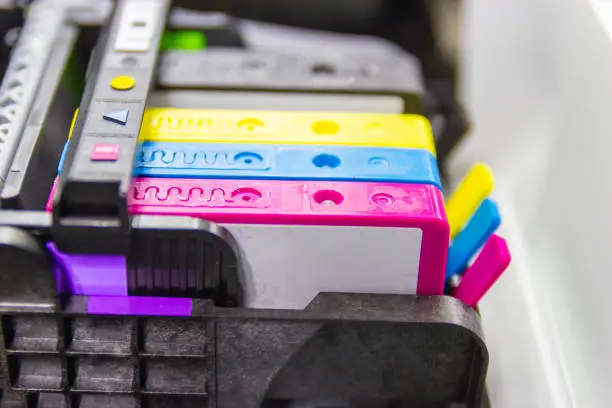
The DTF has a different process than classic techniques, for instance, screen printing or direct-to-garment (DTG). The whole process is fundamentally different since in the DTF, the artist applies their design on a unique film that is later transferred onto the desired air fabric by heat. As a result, not only is full-color printing of high quality possible, but various substrates such as cotton, polyester, blends, and others can also be printed.
An emerging trend that many say will grow quickly is DTF printers themselves. They are simple to use even for beginners and cost-effective, making them a great choice for small business owners. T-shirts and other printed apparel can be produced without heavy or complex machinery, which makes it very easy for startups. This is similar to how aspiring candidates preparing for the PMA Long Course look for accessible and easy-to-use resources like a PMA Long Course book PDF to streamline their study process.
Most importantly, DTF printing is suitable even for newly established and emerging businesses in the fashion industry, particularly in the production of clothing, offering high-quality results for small to medium production. Just as small business owners benefit from efficient and cost-effective printing solutions, students transitioning from the PSAT to the SAT also seek tools like a PSAT to SAT conversion guide to better understand their potential SAT scores and prepare accordingly.
Importance of Understanding the Components Involved: Ink Cartridges, Ink Types, and Printer Compatibility
For optimal results in DTF printing, it is necessary to know the elements that are involved in the process. Among these are ink cartridges, types of ink, and printer compatibility.
Ink Cartridges: The quality of the final print is dependent on the cartridge choices made. For DTF printing, cartridges specifically constructed for use with DTF inks are required since these inks are different from the other types of inks used in other printing techniques. This is important because it maintains a steady flow of ink and helps prevent clogging.
Ink Types: In DTF printing, the ink type employed impacts the color, as well as the durability and fabric cohesion. Engineered DTF inks provide brilliant colors durability and washing resistance. Being aware of the distinctions between the different ink types allows for aiding in the selection of such inks for specific applications.
Printer Compatibility: DTF printing cannot be performed using any printer. It is essential to know what printers can take DTF inks and films for the purpose of carrying out a successful printing process. Incompatibilities may result in poor quality of prints or damage to the printer itself making it imperative to conduct proper due diligence before purchasing any equipment.
Comprehending these universes enables an individual or a company to make sound decisions, enhance their DTF printing procedures, and in the end create appealing designs that can compete in the crowded arena of the textile industry.
Introduction to Ink Supply Systems: Key Components, Functionality, and Maintenance Tips
Ink Cartridges in DTF Printing
The role of ink cartridges in DTF printing is very important. They supply specially made Direct-to-Film inks to the print heads which receive the design that is to be printed on the film. In contrast to previous methods of printing DTF printing, high-quality DTF prints necessitate a constant supply of ink. The quality of the image has a close relationship with the quality of the cartridge. Ink Cartridge Quality has an impact on the color, tone, and depth of a print. A good cartridge will also fix the ink into the film, thus forming a design that is highly resistant to fading and extraction during washing and rubbing of the garment.
Types of Ink Cartridges Suitable for DTF Printers (Refillable vs. Non-Refillable)
There are typically two general types of DTF printers’ cartridges: refillable or non-refillable cartridges.
- Refillable Cartridges: This type of cartridge can be filled with DTF ink depending on the user’s needs. This option can in most cases be the cheaper option since continual refilling saves money over time. It may also be the case that refillable cartridges are better for the environment, as they limit waste better than throwaway cartridges. Nevertheless, care and maintenance must be carried out to prevent leaks or blockages.
- Non-Refillable Cartridges: These types of cartridges already have ink in them so after a single use they cannot be reused again. Because they are easy to replace and are convenient, they may however in the end become the more costly option, especially for companies that print often. Non-refillable cartridges are usually mounted with such a system that allows a constant flow of ink but creates a risk for overusing them which can create more waste.
Importance of Using High-Quality Cartridges for Optimal Results
To achieve desired results, especially in DTF printing, it is important to have high-quality ink cartridges. It is because such cartridges are tailor-made to work with DTF inks, thus enhancing the overall printing quality by having better adherence and more vivid colors. Here are a few reasons why using quality cartridges is essential:
- Print Quality: Cartridges of high quality are instrumental in producing sharp images and better color balance and providing a consistent printed finish. This is especially crucial in designs that have a lot of fine details or require bold colors.
- Reduced Clogging: Such problems are often avoided by barrels with better engineering and materials (e.g. PVA or PE plastics) as found in quality cartridges, which reduce the occurrence of retaining deposits within the print heads. This helps in improving the entire printing sequence, forcing less idle time in terms of cleaning and repairs.
- Durability: With low-quality inks, it is common for cartridge inks to fade, be laundered or scratched revealing the surface underneath. The longevity factor is significant for printed clothing as it helps to preserve the appearance of the design after several cleansing cycles.
- Compatibility: Control of the printed design is also noted when using respectable brands of cartridges, which are better suited for the printer and inks with fewer problems in the course of operation and more efficient working.
To summarize, learning the role of the ink cartridges, the difference between refillable and non-refillable and considering the quality of the cartridges can help a great deal to the DTF printing process such that good prints that meet the requirements of the customers are produced.
Which Ink is Used for DTF Printing?
It is worth mentioning that DTF or Direct-to-Film ink is purposely manufactured for the DTF printing technology, a technology that transfers design images onto different sorts of fabrics. One of the most notable properties of DTF ink is its ability to stick to different kinds of textiles well, both light and dark, thus making it suitable for different applications. The DTF inks are primarily water-based to enhance easy use and reduce the environmental implications compared to solvent-based inks.
Flexibility is another distinct feature of the DTF ink. It has elasticity such that once printed and heat pressed on the substrate, a tough bond is formed that permits movement making it suitable for most types of clothes that may be subjected to stretching or bending. Furthermore, the print’s DTF inks have high color and sharpness levels which print out outstanding designs that do not fade out quickly.
Comparison of DTF Ink with Other Ink Types (e.g., Sublimation, Pigment)
- Sublimation Ink:
- Process: This type of ink allows easy penetration and adherence to polyester fabric. It is in fact designed for transferring purposes. The ink’s special properties convert to a gas at elevated temperature which then diffuses and fuses with the fabric’s fibers.
- Limitations: In most instances, however, it is effective on non-porous surfaces only and, darker shades may need pre-treatment before the design can be applied. Sublimation is not effective for cotton and blended textiles.
- Color Quality: It can emit strong colors across the spectrum and enable designs and images to extend to the edges of the material more easily painted but it offers less cross-fabric versatility than DTF ink.
- Pigment Ink:
- Process: A common form of ink used in inkjet printing is composed of pigment inks which contain solid color particles that are dispersed into an adductor solution.
- Durability: These pigments exhibit excellent anti-UV and water-resistant properties and, thus are applicable for outdoor usage.
- Fabric Compatibility: Such inks can be applied to cotton and blends among other substrates but may require durability aids such as heat-setting. On the other hand, while they are highly competent inks, they are seldom as brilliant as DTF inks.
Importance of Choosing High-Quality DTF Inks for Durability and Vibrancy
Selecting high-quality DTF inks is critical for achieving outstanding print results and ensuring the longevity of the designs. Here are a few reasons why high-quality DTF inks matter:
- Color Vibrancy: Premium DTF inks are formulated to produce vibrant colors that pop on fabric. This quality is essential for creating visually appealing designs that catch the eye of potential customers.
- Durability: High-quality inks are engineered to withstand multiple washes and regular wear without fading or peeling. This durability is crucial for apparel and merchandise, as it maintains the integrity of the print over time.
- Adhesion and Flexibility: Quality DTF inks provide excellent adhesion to various fabrics, allowing for a strong bond that does not crack or peel, even with repeated stretching. This flexibility ensures that designs remain intact, enhancing the longevity of the printed product.
- Consistency: Using high-quality inks reduces the risk of inconsistencies in color and quality between prints. This consistency is vital for businesses aiming to produce uniform products for branding and customer satisfaction.
To conclude, appreciating DTF ink attributes, assessing it about other inks and most of all appreciating the need for quality inks is indispensable in one’s DTF printing business for their prints will always be vivid and everlasting as well as exquisite designs.
What Printers Can Be Used for DTF Printing?
Some printers are specifically made for use in DTF printing. These printers are usually those of well-known brands only that including Epson, Mimaki, Roland, and Brother. Epson is however the most recommended because of the PrecisionCore technology that Epson prints. Mimaki printers are adaptable as they offer numerous media capabilities which makes them ideal for mass production or short-run production. Other brands like Roland and Brother have other budget-friendly DTF-compatible models and other models suitable for different production capacities.
Key Features to Look for in a DTF Printer
To select a DTF printer, a thorough assessment of the following parameters is important for efficient operations:
- Print Head Technology: Look for printers equipped with advanced head technologies such as Epson Micro Piezo and Mimaki advanced piezo head technologies. These technologies provide better positioning of ink droplets, hence sharper images and better color reproduction.
- Ink Compatibility: Confirm that the printer supports DTF inks since they are different from other inkjet inks. Moreover, the Printer should be able to bear the viscosity and chemical formulation of DTF inks for satisfactory results.
- Print Resolution: Higher print resolutions are usually better when it comes to output-quality images. It would help if you sought printers that have print resolutions above 1440 dpi in order to get good-quality prints.
- Media Handling: Examine the machine’s capabilities concerning the types and sizes of media that may be used. A multi-purpose printer is flexible as it is able to take up different types of film and fabrics hence improving the productive capacity.
- Ease of Use: User-friendly interfaces and features like automatic cleaning cycles can streamline the printing process, making it easier for operators to maintain and use the printer. Multi-functional printers with a variety of interfaces and features such as automatic cleaning cycles are easy for operators to use for printing and maintenance purposes.
Recommendations for Popular DTF Printer Models
Some of the most common DTF printers in the market that have been a success include the following:
- Epson SureColor F570: The printer offers good sense and is highly recommended because of its prints. It also features PrecisionCore technology and works well on most fabric types making it excellent for DTF printing.
- Mimaki UJF-3042FX: It has high levels of versatility making it a very good flatbed printer for textiles. Advanced print head technology further enhances the Detail and color of the print.
- Roland VersaUV LEF2-200: This machine is ideal for flat and flexible material which makes it suitable for DTF applications. The printer contains very effective UV-LED technology, guaranteeing brilliant prints as well as endurance.
- Brother GTXpro: This is a DTG printer, however, this model can be used as a DTF printer with the appropriate configuration. This model is user-friendly and produces excellent-quality prints.
- Epson L1800: If you are new to DTF printing, this should be your printer of choice. Besides being low in cost, the printer produces high-quality prints. Additionally, L1800 printers support DTF ink systems which helps in small to medium level production.
When considering a DTF printer, it is essential to evaluate the compatibility, features, and specific models that align with your printing needs. By selecting a printer with advanced technology and features tailored for DTF printing, you can ensure high-quality outputs and a smooth printing process, leading to successful DTF printing projects. When selecting a DTF printer, it is important to consider the range of models available, their44 specific features, and how well they integrate with your printing requirements. By investing in a printer that meets the demands of DTF printing technology, one can be assured of quality outputs and the achievement of DTF printer projects effectively.
Can I Use DTF Ink in Any Printer?
Direct-to-Film DTF ink has a proprietary formula that is put only into the Printer which works according to this specific ink’s requirements. DTF ink is capable of yielding stunning good and long-lasting prints but only manual DTF ink can be effective on this specific kind of printing that is DTF.
Compatibility with Printer Types
- Inkjet Printers: The heat transfer printing process is quite popular among custom designs since it allows printing images in full colors on apparel quickly. It is inexpensive and end-users can select various types of applications such as t-shirts, uniforms, jerseys, etc., to imprint the preferred designs
- Flatbed Printers: DTF is considered the best option when compared to others in printing including sublimation printing due to the two having almost resembling processes in image transfer. For DTF, though, a transfer film specifically intended for application onto fabric or non-fabric media is utilized, while in sublimation printing it uses heat to transfer the dye into the fibers of the fabric so that the dye becomes a part of the material.
- DTG Printers: Beyond digital printing, the screen printing process itself has good market recognition which can be integrated with fashion in DTF printing as a finishing effect. It has been well adapted for use on Amazing printable surfaces with a great deal of durability but opaque white colors are more accurate.
Risks of Using DTF Ink in Non-Compatible Printers
The use of DTF ink in printers that are not intended or modified for its application presents several dangers including:
- Clogs and Maintenance Issues: DTF ink may differ in viscosity and perhaps even chemical components from conventional inkjet ink. The use of DTF ink in an incorrectly configured printer can result in blocked print heads or ink delivery systems, which will inevitably lead to excessive and costly repairs.
- Damage to Printer Components: Incorrect inks may also pose a risk to the delicate parts of a printer, including print heads, ink lines, and even cartridges. This damage may require repairs or replacement of the components, which leads to IDL and extra costs.
- Poor Print Quality: Non-edge printers are bound to mishandle the DTF ink, resulting in unfair print quality whereby the ink is misallocated, colors do not match, or transfer is less than complete to film or fabrics.
Recommendations for Ensuring Compatibility Before Purchase
To ensure compatibility and prevent the above problems when using DTF ink, the sufficient considerations include:
- Consult Manufacturer Specifications: Review printer specifications and manufacturer guidelines to determine if the printer is compatible with DTF ink systems. Look for printers explicitly designed or recommended for DTF printing. Go through the printer specifications and the guidelines to see if there are suggested printers that may work well with DTF ink systems. It would also be important to establish if there are printers designed or recommended specifically for DTF printing.
- Trial and Testing: Make sure you do not purchase before you have conducted trials or tests involving the use of DTF ink with the printer model under consideration. Also, look at the ink’s adhesion in terms of the thickness and quality of printed material and other inputs in comparison to outputs.
- Expert Advice and Support: Contact qualified individuals or suppliers with experience in this type of printing. Such recommendations will assist in choosing the right models of printers, what will be expected at the time of installation, and what considerations will be made in order for the DTF ink application to work.
- Vendor Support and Warranty: Printers should be ordered from reliable vendors who have reasonable warranty conditions and offer great support to their customers. This type of support is important because there are occasions when trying to install or operate a printer, where some compatibility issues or other technical matters can occur.
Specific procedures and DTF tests are allowed for printer systems to connect. This is achieved through correct assessment of compatibility, testing various systems, and seeking guidance from professional printer systems manufacturers on how to maximize the quality and minimize operational risks of DTF prints.
Can a Regular Printer Be Used for DTF Printing?
Regular inkjet printers are typically not designed to accommodate the specific requirements of Direct-to-Film (DTF) printing, which involves printing designs onto a special transfer film before applying them to various fabrics. The primary challenges arise from differences in ink formulation, print head technology, and overall printer architecture. Since DTF printing is a process that requires a special transfer film and the transfer of the image onto a fabric, traditional inkjet printers do not meet the requirements. The main problems come from discrepancies in ink type, print head technology, and overall printer construction.
Key Challenges
- Ink Formulation: DTF inks adhere to transfer film and fabric which increases their use for transfer printing. DTF inks have a different viscosity and chemical makeup from standard ink which raises compatibility issues. The properties of DTF inks are not manageable by a standard inkjet printer which can lead to bad print quality or even the printer getting damaged.
- Print Head Technology: Most of the conventional inkjet printers have print heads configured for water-based or dye-based ink. However, DTF printing is characterized by the use of heavy viscosity DTF inks which require special print heads to operate, which regular printers often do not have. This difference can cause clogging of conveyor components, imperfect ink resolution, and many repairs.
- Media Handling: DTF printing has some specifications with the use of transfer films which are different from normal printer paper. Sometimes regular inkjet printers lack the means to correctly feed or align the films, causing misalignment and material wastage.
Challenges and Potential Modifications Required for Regular Printers
If a DTF printer is mistakenly handled as an ordinary inkjet printer, certain complications and changes must be taken into consideration:
- Print Head Modification: To utilize thicker DTF inks, there may be a requirement to change or re-engineer the print head. While this addition can be a great help, it is quite an intricate procedure and will most likely void any current warranty of the printer.
- Ink Delivery System Alterations: A modification of the ink delivery system can also be necessary as a result of the various properties of the ink. This may include upgrading any part that may be obsolete as a result of DTF inks being used.
- Frequent Maintenance: A user may run the risk of experiencing clogs and maintenance problems because of the inks and print heads, making regular cleaning of the print heads and the ink line a must. This added layer of maintenance tends to consume a lot of time and increases expenditure on obtaining more links and heads.
- Subpar Results: At best, the print quality is unlikely to meet the requirements of a DTF printer, much less the quality of printing inverters. Changing those parameters may cause several issues such as distortion of colors, low capabilities of cohesion, and weakness of prints.
Final Thoughts on the Importance of Investing in a Dedicated DTF Printer
In this field investing in a stand-alone DTF printer is important to enhance the results and reduce the operational problems. DTF printers are specially designed to suit the specific demands of DTF printing, thus they provide several benefits:
- Optimized Performance: DTF ink performance is optimal when using printers containing print head technologies and ink systems designed for use with DTF inks to allow good ink flow, colors, and details.
- Reduced Maintenance: Regular and predictable maintenance schedules for dedicated DTF printers are less since they are designed for DTF and do not have many operational challenges, thus maximizing the printer’s reliability.
- Quality Assurance: With a dedicated DTF printer, prints are guaranteed to be produced with the right requirements, correct strength, and adhesion ensuring that professional standards are met.
- Cost Efficiency: At first the price of a dedicated DTF printer seems too high, but in the long run it ends up being cheaper due to reduced material wastage, less frequent repairs, and improved print quality thus leading to satisfied customers and good profit margins.
Conclusion
In conclusion, a good knowledge of ink cartridges, the different types of ink, and the various printers that exist is fundamental in helping one successfully execute the DTF printing. With the right DTF inks and cartridges, the prints are bright and last quite a while, and with a DTF printer, working out the usual problems is quick. To get the best prints, it is recommended to search for equipment to use in advance and stick to it. It only requires time to carry out the above process to improve quality and efficiency in printing which will benefit the customers who in turn will create a successful business in the textile sector.
Leave a reply
You must be logged in to post a comment.














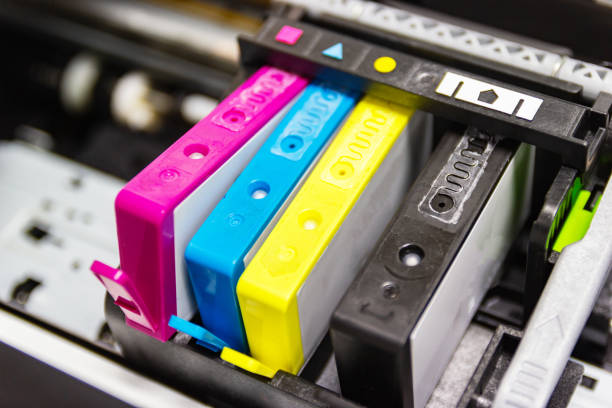








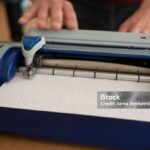


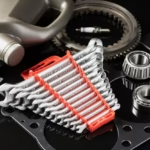
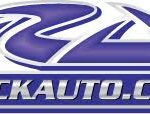








Pingback: Everything You Need to Know About the Rice Purity Test Scores, History, and Meaning - PureTechZone.com